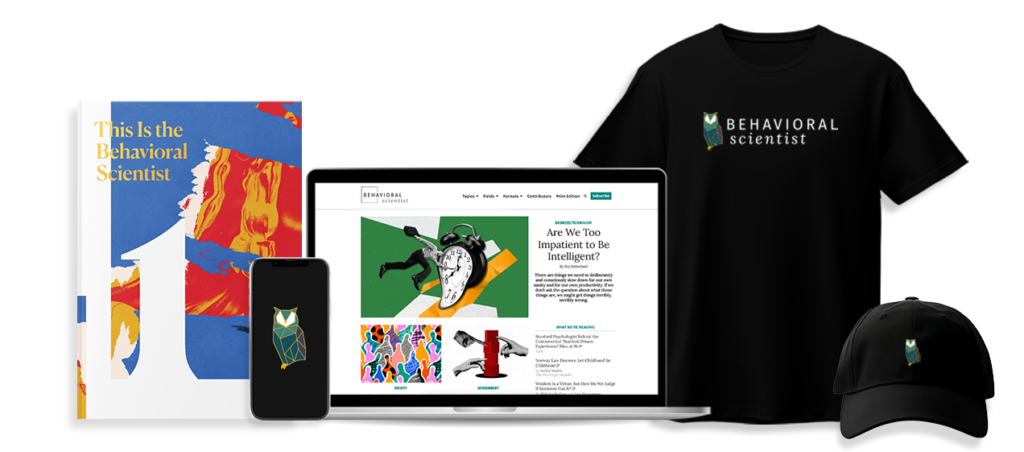Early one morning, I received a LinkedIn notification from a job candidate we had just rejected—rarely a good sign. But this candidate’s message was different: “Job hunting can be hard and processes frustrating,” she wrote. “While I didn’t land my dream job yet, I discovered firms making a difference in how they recruit. Affective Advisory’s process was remarkably different: well-informed, transparent, and appreciative, using behavioral science insights.”
In an era where rejected candidates frequently vent frustrations on LinkedIn or Glassdoor, here was a rejected candidate publicly endorsing an organization that had turned her down. She became an advocate, even though she didn’t get the job.
Today, many organizations claim to put their people first, proudly declaring a commitment to their employees. Yet have a look at typical hiring processes—the first and most decisive touchpoint between the organization and its potential employees—and you’ll find a starkly different reality.
What you’ll find (and have likely experienced firsthand) is a bureaucratic quagmire that fails to live up to the expectations of the people trying to get hired or the people doing the hiring.
Those searching for jobs have to navigate incomplete information about the role, the team, and the organization. They have to interpret ambiguous hiring criteria and opaque decision-making processes. They have to put up with automated, boilerplate communication, if communication comes at all.
Those tasked with hiring often aren’t any better off. They have to muddle through poorly defined hiring protocols and timelines. They regularly receive little to no guidance on how to review applications fairly or conduct unbiased interviews. They have to sit through tedious evaluation rounds that can take months.
Today, many organizations claim to put their people first, proudly declaring a commitment to their employees. Yet have a look at typical hiring processes, and you’ll find a starkly different reality.
Beyond the frustration, the costs of mis-hiring are staggering: According to Gallup, voluntary turnover drains $1 trillion annually from United States businesses alone, with a recent study from Deloitte estimating replacement costs as high as 1.5–2.0 times the employee’s annual salary.
What if organizations decided to treat their entire hiring process (not just who they hire), as a competitive advantage rather than a wearisome chore?
Over the past eight years, as the leader of a growing behavioral science consultancy, Affective Advisory, I’ve made it my mission to create a better way to hire. And in the course of building our hiring process, my team and I have learned a number of important lessons. We’ve surfaced the key failure modes and developed solutions based on the best research and best practices. And, perhaps most importantly, we’ve learned how organizations can reimagine and redesign their hiring processes, so that it becomes a value add and trust building exercise for everyone involved.
After hundreds of candidate evaluations and eight full-time hires, I believe these are lessons that can help small companies like ours and larger organizations hire more effectively. Hiring doesn’t need to be a bureaucratic burden. It can be your best chance to demonstrate—not just declare—your values.
Deciding there is a better way to hire
When I decided to make my first hire five years ago, the stakes were high, as they are for any small team or company. The hiring process would require considerable time and resources, of which I had very little. New employees would need training once they joined. And their work would significantly impact whether the then-young company succeeded financially and culturally. At such a critical stage, there was simply no room for low performance; no cushion to absorb the impact of a poor fit, no possible plan B.
In addition to these practical considerations, there were more philosophical ones as well. I founded the firm with the vision to support public, private, and nongovernmental organizations incorporate the best behavioral science research and methods into their work. Our aim was to help clients analyze, understand, and change behavior in a scientifically and ethically sound way. In our work, we constantly advocate for rigorous, evidence-based methods. So when it came to hiring, we couldn’t just fall back on the status quo. It was important that we practiced what we preached.
For the first hire, I brought in four advisors with experience in HR and behavioral science to help. We started with an in-depth review of how companies hired and what candidates experienced in order to figure out where existing hiring processes were going wrong. We identified five fundamental failures that begin at the start of the hiring process and cascade through every interaction, eroding (rather than building) trust in the company, team, and role. Here is what we found:
Unaligned hiring teams: Most organizations involved multiple people in hiring decisions, yet few defined clear roles and responsibilities for those involved. For some organizations, it was not clear who managed the hiring process, who was supposed to contribute and how, and who had the ultimate decision-making authority. This lack of role clarity colored the entire hiring process, leading to impulsive, unstructured decision-making and poor internal and external communication.
Ambiguous job descriptions and unclear criteria: We found that organizations too often failed to define the role and candidate profile with enough detail to create meaningful evaluation criteria. Time-pressed managers might pass on the responsibility of defining job descriptions to HR teams who, working without context, defaulted to generic templates. As a result, job postings brimmed with buzzwords and wishful requirements while revealing nothing about the role’s day-to-day responsibilities or performance metrics.
Amplified bias: The way hiring teams evaluated candidates rarely respected established behavioral science research. This often meant that their processes amplified biases in their decision-making rather than reducing them, including biases around race, gender, and class. This reduced the size of their talent pool and increased their risk of building teams that were too ideologically and experientially similar.
Uncomparable interviews: We found that interviews often varied considerably from one candidate to the next. For example, the questions different interviewers asked, how they scored responses, and the length of the interview lacked the standardization needed to make useful comparisons. The result was that the process of evaluating candidates became negotiations based on interviewers’ opinions rather than decisions based on objective assessments.
Communication voids: Because hiring teams often operated without agreed-upon timelines, they rarely communicated reliably to candidates. Even an acknowledgement that an application had been received often arrived late or never. Candidates, after months of going through the hiring process, might receive impersonal, automated, and boilerplate rejections without any substantive feedback. Hiring software, which promised administrative ease, often exacerbated these kinds of issues.
When organizations fail to define roles and procedures, set unclear timelines, and communicate poorly, they erode trust with their potential employees all before their first day at work.
When organizations fail to define roles and procedures, set unclear timelines, and communicate poorly, they erode trust with their potential employees all before their first day at work. (Not to mention signaling that this kind of work is acceptable at the organization.)
Redesigning the hiring process around trust
Trust was central to the system I wanted to build. We know from research how trust factors into team performance and how trust and alignment with the company’s purpose are associated with higher employee incomes, longer job tenure, greater job satisfaction, less chronic stress, improved satisfaction with life, and higher productivity.
But building trust doesn’t start on an employee’s first day; it starts during hiring. Every interaction, from the first job posting to the final decision, can either build or erode trust. This determines not just who joins but how they feel, interact, perform, and advocate for your organization’s values in the future.
For our hiring process, we defined six core components. Our goal was to build a structured process that addressed the deficiencies we surfaced during our review, incorporated behavioral science research and best practices, and allowed us to cultivate trust among our team and candidates at each step.
1: Assembling the hiring team: We start by assembling an evaluation team of at least four team members or outside advisors. Members of the hiring team are selected based on who possesses expertise in the domain we are recruiting for, who will work with the new hire, and who can provide complimentary perspectives to one another. The makeup of the team is crucial for the success of the following five steps, as they drive the hiring process from start to finish.
2: Defining role clarity: The hiring team begins by listing the potential required competencies and day-to-day responsibilities and for the new role. From these lists, the hiring team defines the role and desired profile, distinguishing mandatory from optional criteria across four dimensions: academic qualifications, professional experience, technical skills, and intrinsic motivation.
This clarity helps candidates self-assess fit when deciding whether to apply and gives evaluators concrete criteria for assessment. The evaluators can avoid the temptation to alter criteria midprocess, and it gives the team a shared understanding of what a successful candidate looks like for a specific role. It also enables us to provide candidates with clear feedback against the established guidelines, which helps build trust when progressing or rejecting candidates during the hiring process. Finally, rejecting candidates can be stressful for the hiring team; clarity makes the difficult, but necessary, step of rejection easier on everyone.
3: Systematic bias reduction: To reduce bias as we evaluate candidates, we’ve implemented a number of evidence-based practices. We remove demographic information from all incoming CVs, similar to blind orchestra auditions, in order to prevent ourselves from favoring people with similar social or educational backgrounds, age brackets, or special interests, to name just a few. This follows from research on unconscious discrimination in resume screening, which shows how identical skillsets with different names and profile pictures receive different ratings by evaluators.
In our first year, this meant manually copying information from CVs into an Excel spreadsheet. In following years, we streamlined this process through a dedicated submission page on our website that automatically generates comparable profiles organized by relevant dimensions while masking personal identifiers.
Additionally, those evaluating applications review groups of up to 30 shortlisted candidates in a randomized order. The aim is to prevent the ranking effects that can compromise the quality and fairness of evaluations.
4: Structuring team decision-making: Structured team decision-making is crucial for accurate evaluations and for maintaining the integrity of the process for those doing the hiring in groups. First, each team member scores qualified candidates independently on predefined metrics across all four dimensions using a five-point scale. Importantly, each team member submits their assessments before any collective discussion to prevent anchoring and confirmation bias.
We found that team members who participated in hiring developed genuine ownership over creating an inclusive, high-performing environment.
When teams convene, aggregate scores drive the conversations, not the hierarchies or personalities within the hiring team. Every team member’s score, regardless of seniority, carries equal weight. This helps the team avoid potentially subjective debates and grounds their discussion in the evidence gathered in the application. If there are outliers, hiring teams discuss why different evaluators arrived at different ratings for the same candidate, rather than dismissing them.
5: Designing interviews and assessments: Our goal during interviews and assessments is to better understand candidates’ performance and behaviour in as realistic of a context as possible. And as with team decision-making, a clear structure and consistent criteria is essential to evaluating and comparing candidates accurately. In our hiring process, candidates participate in two interviews conducted by two individual assessors, and they complete one on-site case-study assessment with our team. We combine the two methods to increase inter-rater reliability and reduce bias in evaluation.
Our interview questions focus on a candidate’s actual behavior. We ask things like: “Give me an example when you successfully contextualised and translated [a scientific finding or theory] into business practice?” or “How would your former work colleagues describe your approach to [a specific task, e.g., engaging stakeholders in workplace experiments]?”
The case study assessments involve real challenges candidates would face if hired. This provides us with a more realistic look at their performance, in addition to allowing us to observe how they problem solve, incorporate feedback, and communicate.
Crucially, interviewers and case evaluators maintain independence during the process. Interviewers score interviews independently and don’t discuss candidates’ informally between sessions. For the case studies, evaluators use predefined metrics, so that they are evaluating candidates on the same criteria, and they only compare ratings after all assessments of each round are completed.
6: Building trust through systematic communication: Throughout a candidate’s entire journey—from their application submission through our final decision—we make communication clear and systematic.
At the start, we share the detailed steps of our hiring process with all qualified candidates and commit to honoring timelines consistently. After each round, we update candidates on what happened, what we decided, what to expect next, when candidates will hear from us, and what we need from them. We add valuable information about how many people applied and how many progressed to each of the rounds. (See an example email below.)
For candidates that reach the final round, but who don’t receive an offer, the managing director provides them with personal feedback, transforming rejection from a dead end into a development opportunity.
This approach honors investment by both candidates and our recruiting team, recognizing that every interaction shapes people’s perceptions of us and our market reputation. By treating each touchpoint as an opportunity for transparent, respectful engagement, we aren’t just evaluating candidates rigorously; we are building relationships founded on trust that can endure regardless of whether they join the company at that time or not.
What were the results?
How did a better hiring process change our company?
First, and perhaps most importantly, we were able to build a highly qualified and diverse team of behavioral scientists. Every new team member successfully completed their probation period. Our retention rates surpassed industry standards. Moreover, we achieved gender balance across all hires since 2022, not through quotas and targets but through systematic bias reduction and standardized evaluation.
We found that team members who participated in hiring developed genuine ownership over creating an inclusive, high-performing environment. We saw them grow into culture carriers, responsible not just for selecting candidates but for embodying the values we promoted in candidate onboarding and retention.
New team members arrived already aligned with these cultural norms, having experienced them firsthand as candidates. Most significantly, the trust established during hiring set expectations that permeated our daily operations. Every team member expects and provides the transparency, fairness, and structured communication they experienced as candidates. This created a self-reinforcing culture where behavioral science principles weren’t applied only to recruiting but became the foundation for how we work together.
Our hiring process surpassed our expectations in boosting our reputation. We found that rejected candidates became voluntary ambassadors. Messages like the one we received on LinkedIn became part of an emerging pattern, not an exception.
Every organization claims to put people first. The ones that succeed are those whose processes prove it.
We recognize, of course, that these are our own results from a small consultancy making eight full-time hires over five years. Our sample size is limited, and our industry is specific. But our approach represents what’s possible when how you hire is treated as seriously as who you hire.
We do also recognize that this approach requires more upfront investment in time and human resources. Five years in, it takes four people about one day to define the role and criteria in detail, as well as select and onboard the hiring team. It takes another day to respond and provide feedback to all candidates.
We think this investment is worth every minute, especially when we contrast the positive spillovers on team culture and cohesion with hidden costs of traditional hiring: rehiring for poorly filled roles, trouble retaining talent, damage to an organization’s brand, and erosion of culture. We believe this structured approach pays for itself within a year through reduced turnover alone, not counting the reputational benefits and the value of ongoing engagement with former candidates.
Talent represents the most valuable asset of any firm, and candidates evaluate employers as rigorously as vice versa. AI threatens to further depersonalize human interactions. To thrive in an era that threatens to erode human interactions, organizations must create consistently valuable experiences.
The competitive advantage isn’t in fighting harder in the “war for talent” but in building systems that cultivate trust, performance, and, with it, an employer brand at scale. Every organization claims to put people first. The ones that succeed are those whose processes prove it.








